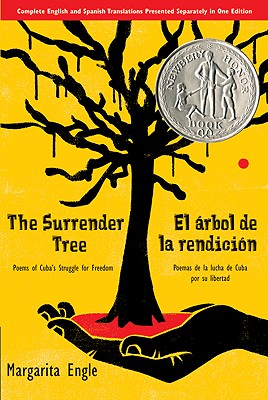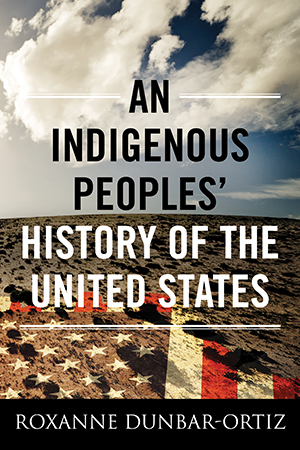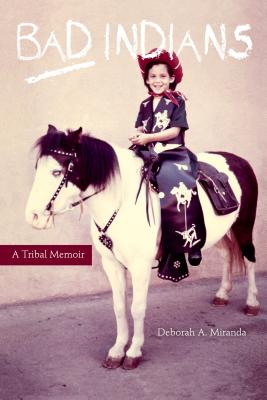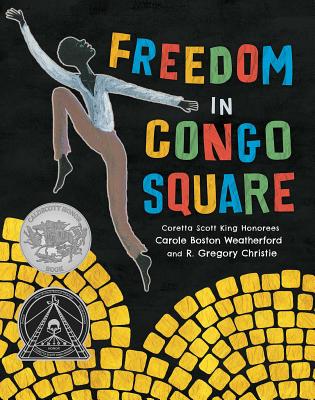Book — Non-fiction. By David H. T. Wong. 2012. 240 pages.
A graphic novel that gives a panoramic but also an intimate look at the Chinese experience in North America.
Continue reading
Book — Fiction. By Margarita Engle. 2010. 384 pages.
Bilingual book of historical fiction in verse about Cuba's long fight for independence in the 19th century.
Continue reading
Book — Non-fiction. By Dave Zirin. 2016. 276 pages.
Examines the cultural, economic, and political context and impact of the World Cup and the Olympics on Brazil.
Continue reading
Book — Non-fiction. By Roxanne Dunbar-Ortiz. 2015. 312 pages.
Four hundred years of Native American history from a bottom-up perspective.
Continue reading
Book — Non-fiction and prose. Deborah A. Miranda. 2012. 240 pages.
A compilation of documents, photos, and memoir that recounts the establishment of missions in California and the impact on Indigenous people—then and today.
Continue reading
Book — Non-fiction. By Winifred Conkling. 2015. 176 pages.
Young adult biography about Emily Edmonson who was one of 77 who attempted to escape slavery in Washington, D.C.
Continue reading
Article. By James W. Loewen. July 2015 in the Washington Post.
A critique of textbook and mainstream media coverage of the Civil War.
Continue reading
Article. By William Loren Katz. 2010.
The abolitionist influence on the history of Christmas celebrations in the United States.
Continue reading
Digital collection. The work of Dr. Louis Charles Roudanez, founder of the first Black daily newspaper in the U.S., the New Orleans Tribune, with articles, excerpts, videos, and a timeline.
Continue reading
Book — Non-fiction. Compiled and with an introduction by William Loren Katz. 1996. 434 pages.
Six narratives by people who were enslaved that helped expose the horrors of slavery and advance the fight for abolition.
Continue reading
Book — Fiction. By Joseph Marshall III. Illustrations by Jim Yellowhawk. 2015. 176 pages.
A contemporary Native American boy learns about the history of Crazy Horse in a journey with his grandfather.
Continue reading
Book — Historical fiction. By Zetta Elliott. 2015. 88 pages.
Time travelling historical fiction for upper elementary school students on the New York City Draft Riots.
Continue reading
Book — Non-fiction. By Roxanne Dunbar-Ortiz and Dina Gilio-Whitaker. 2016. 224 pages.
Deconstructs persistent myths about American Indians rooted in fear and prejudice — an astute and lively primer of European-Indian relations.
Continue reading
Website.
An online collection of lessons, book lists, biographies of noted historical figures, and readings for free use by classroom teachers.
Continue reading
Film. By Sam Pollard, Catherine Allan, Douglas Blackmon and Sheila Curran Bernard. 2012. 90 minutes.
Reveals the interlocking forces in the South and the North that enabled “neoslavery” post-Emancipation Proclamation.
Continue reading
Lesson. By Bill Bigelow. 17 pages.
This role play engages students in thinking about what freedpeople needed in order to achieve — and sustain — real freedom following the Civil War. It's followed by a chapter from the book Freedom's Unfinished Revolution.
Continue reading
Teaching Guide. By Facing History and Ourselves. 2015.
A collection of lessons, videos, and primary sources to teach about Reconstruction.
Continue reading
Book — Non-fiction. By Eric Foner. 2015. 352 pages.
A people's history view of the Reconstruction era.
Continue reading
Book — Fiction. By Ann E. Burg. 2016. 352 pages.
Story of a family fleeing slavery written in verse for grades 4-8.
Continue reading
Book — Non-fiction. By Kate Schatz. Illustrated by Miriam Klein Stahl. 2016. 112 pages.
Profiles of women who fight for social justice around the world.
Continue reading
Film. By Upstander Project. 2015. 13 minutes.
Story of forced removal of Native American children in Maine sent to boarding schools.
Continue reading
Teaching Activity. By Alison Kysia. 28 pages.
In this lesson, students learn about the colonial history of Congo, debate responsibility for crimes against humanity, and investigate the connection, past and present, between the exploitation of natural resources and violence.
Continue reading
Book — Non-fiction. By Carole Boston Weatherford. Illustrated by R. Gregory Christie. 2016. 40 pages.
Introduces children to the brutality of slavery and the role of culture in resistance.
Continue reading
Book — Non-fiction. By National Park Service. 2017. 165 pages.
A theme study on the history of the Reconstruction era.
Continue reading
Film. Center for Investigative Reporting and Two Tone Productions. 2007. 84 minutes.
Filmmaker Marco Williams examined four examples of primarily white communities violently rising up to force their African-American neighbors to flee town.
Continue reading

























